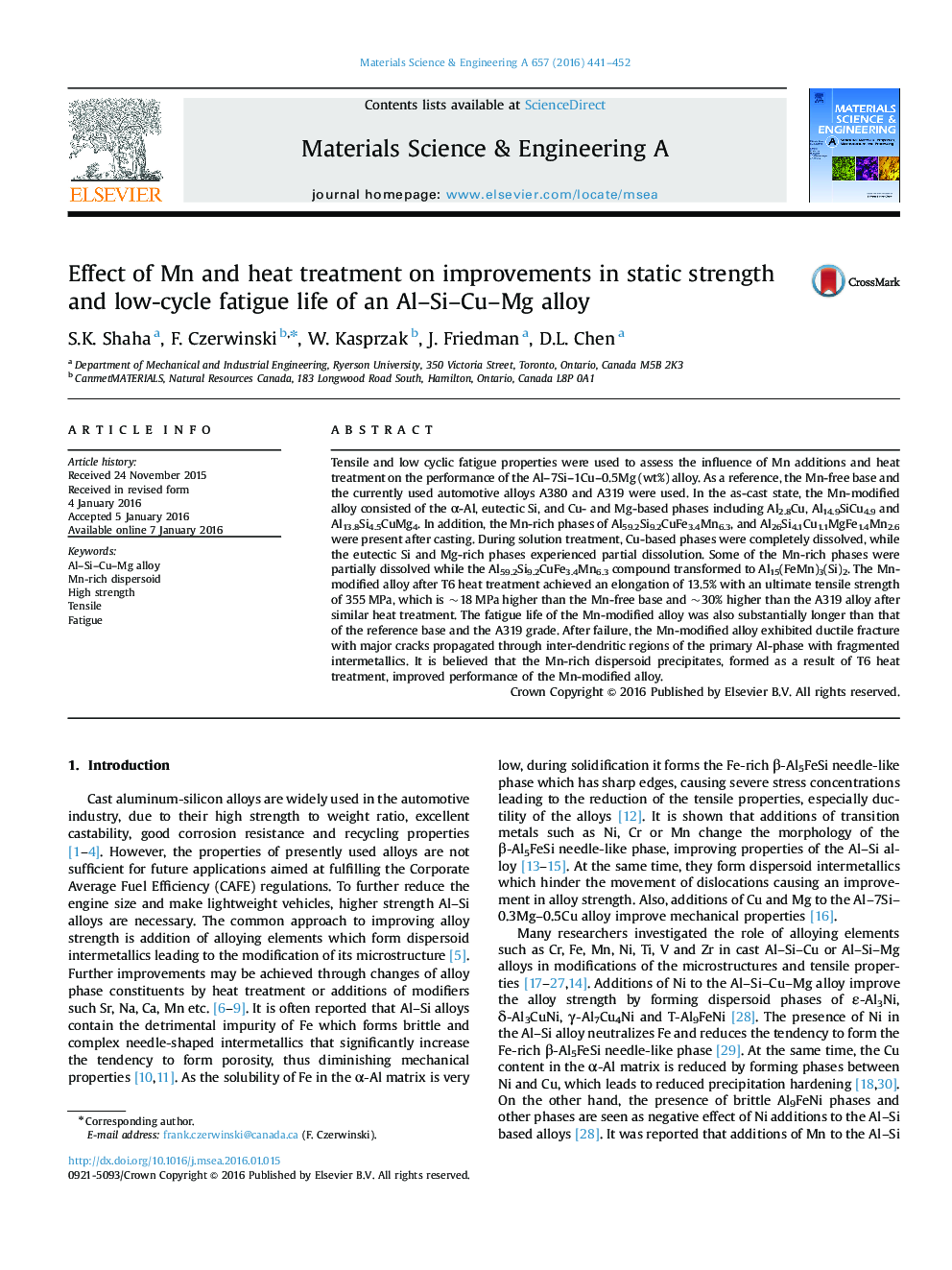| Article ID | Journal | Published Year | Pages | File Type |
|---|---|---|---|---|
| 1573766 | Materials Science and Engineering: A | 2016 | 12 Pages |
Abstract
Tensile and low cyclic fatigue properties were used to assess the influence of Mn additions and heat treatment on the performance of the Al-7Si-1Cu-0.5Mg (wt%) alloy. As a reference, the Mn-free base and the currently used automotive alloys A380 and A319 were used. In the as-cast state, the Mn-modified alloy consisted of the α-Al, eutectic Si, and Cu- and Mg-based phases including Al2.8Cu, Al14.9SiCu4.9 and Al13.8Si4.5CuMg4. In addition, the Mn-rich phases of Al59.2Si9.2CuFe3.4Mn6.3, and Al26Si4.1Cu1.1MgFe1.4Mn2.6 were present after casting. During solution treatment, Cu-based phases were completely dissolved, while the eutectic Si and Mg-rich phases experienced partial dissolution. Some of the Mn-rich phases were partially dissolved while the Al59.2Si9.2CuFe3.4Mn6.3 compound transformed to Al15(FeMn)3(Si)2. The Mn-modified alloy after T6 heat treatment achieved an elongation of 13.5% with an ultimate tensile strength of 355 MPa, which is ~18 MPa higher than the Mn-free base and ~30% higher than the A319 alloy after similar heat treatment. The fatigue life of the Mn-modified alloy was also substantially longer than that of the reference base and the A319 grade. After failure, the Mn-modified alloy exhibited ductile fracture with major cracks propagated through inter-dendritic regions of the primary Al-phase with fragmented intermetallics. It is believed that the Mn-rich dispersoid precipitates, formed as a result of T6 heat treatment, improved performance of the Mn-modified alloy.
Related Topics
Physical Sciences and Engineering
Materials Science
Materials Science (General)
Authors
S.K. Shaha, F. Czerwinski, W. Kasprzak, J. Friedman, D.L. Chen,
